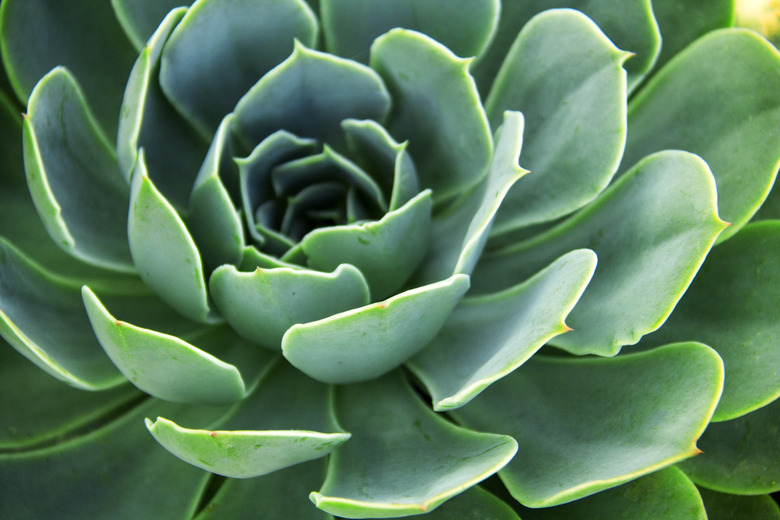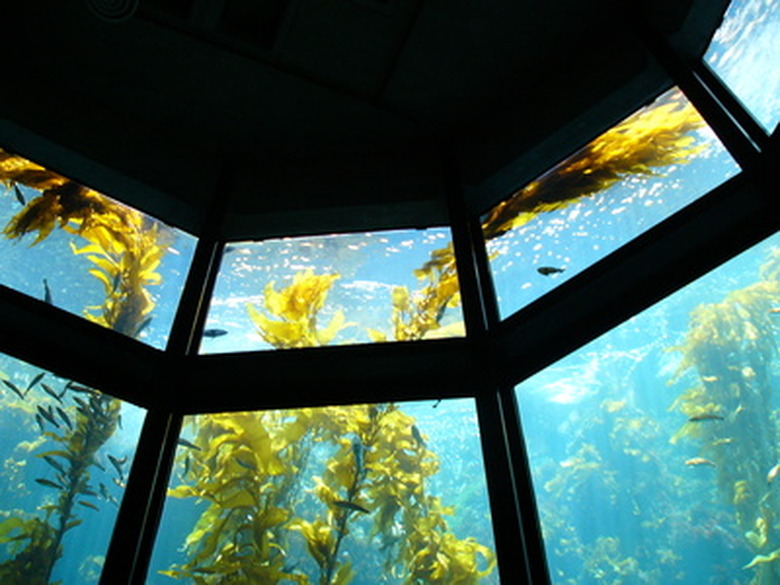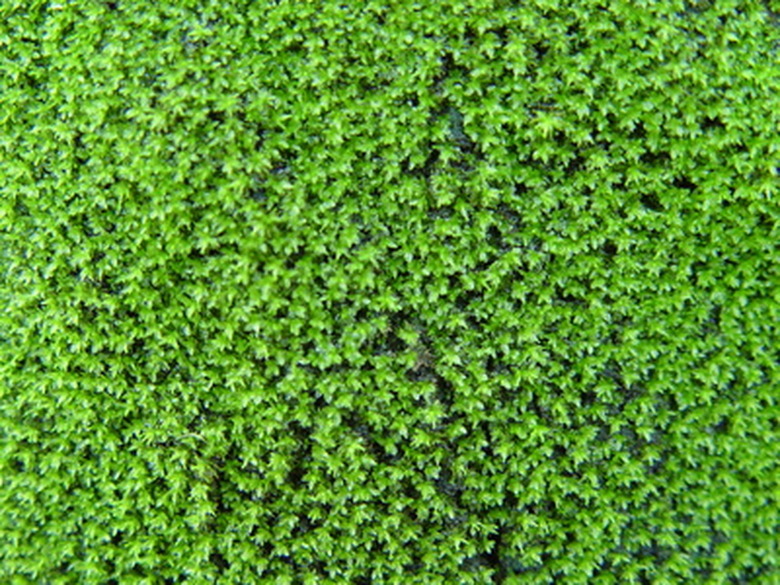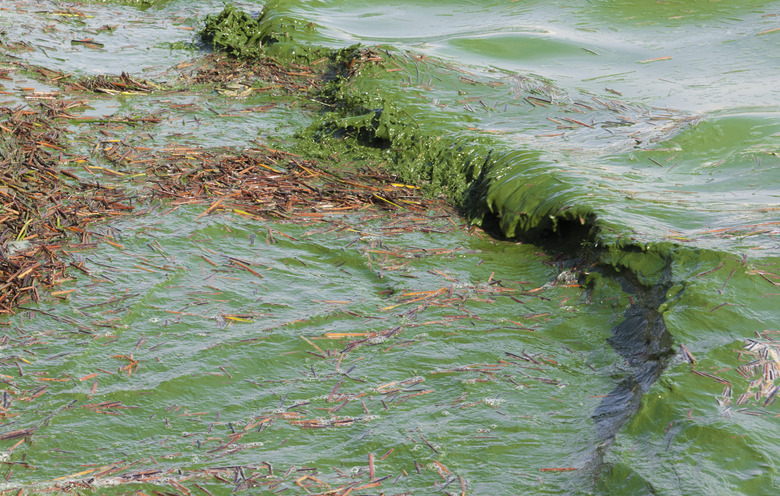Types Of Organisms That Can Use Photosynthesis
Photosynthetic species form the basis for life on Earth in many ways. Perhaps most notably, they convert water, sunlight, and carbon dioxide into oxygen for other creatures while making sugar for themselves. Earth supports numerous organisms that have the green pigment in which photosynthesis occurs. Some, like plants, are well-known for their role in providing air and sustenance to many ecosystems. Others, such as algae, some bacteria, and even some animals, also possess the ability to create their own sugar and use it as chemical energy.
TL;DR (Too Long; Didn't Read)
Life on Earth depends on photosynthesis, a process that changes carbon dioxide and sunlight into oxygen and sugar. Plants, algae, cyanobacteria and even some animals conduct photosynthesis.
Phytoplankton: Essential for Air
Phytoplankton play an essential role in Earth's environment. Similar to common plants, this broad category – which includes single-celled plants, bacteria and algae – uses chlorophyll to convert carbon dioxide, sunlight and water-based nutrients into oxygen. Found in both freshwater and saltwater, these microscopic organisms form the basis of life in the ocean, providing everything from larger plankton species to enormous whales with sustenance. Similar to forests, phytoplankton absorb tremendous amounts of carbon dioxide, and scientists estimate that these tiny organisms collectively create the lion's share of oxygen on Earth. Phytoplankton span different, larger categories of photosynthesizing creatures, but their contribution to the environment is perhaps the largest.
Algae: From Microscopic to Macroscopic
Common in most bodies of water, algae vary in size dramatically from tiny, single-celled organisms in plankton to kelp fronds 200 feet tall in the ocean. Like plants, algae species photosynthesize to create the chemical energy they need to survive. However, algae species differ from plants in that they lack proper leaves, roots and reproductive organs. Different algae species contain different colors of chloroplasts – green, blue-green, red and brown.
Plants: Feeding the World
The best-known group of photosynthesizing creatures, plants act as an important part of the world's ecosystem. Many aquatic and terrestrial animals use plant species as food, and large environments formed of plants contribute oxygen to the Earth's atmosphere – the Amazon rainforests create around 20 percent of the world's oxygen. Their leaves or leaf substitutes contain chlorophyll, the site of photosynthesis, which contributes to their green color.
Cyanobacteria: The First Photosynthesizers?
Microscopic and water-based creatures, cyanobacteria are among the oldest existing species on Earth, dating back more than 3.5 million years. Some scientists believe that the chloroplast in plant cells evolved through endosymbiosis, a process that saw cyanobacteria start to live within plant cells. This partnership formed at some point in either the Proterozoic or Cambrian period. The bacteria cells use the plant cells as a home and, in turn, they produce food for their host. While they are small, cyanobacteria form colonies large enough for the eye to see.
Animals: Rare but Not Unheard Of
While many animals eat photosynthetic creatures, only a few can photosynthesize. Sea slugs steal the genes that allow algae to photosynthesize as they eat them and pass on the algal cells to their offspring. Spotted salamanders have a similar relationship with algae, although as a vertebrate, it is particularly special because most creatures with spines have immune systems that tend to kill foreign bodies such as algae. Some scientists theorize that Oriental hornets may draw energy from sunlight, although this doesn't appear to be photosynthesis proper. Other researchers theorize that photosynthesis rarely evolved in animals for several reasons: Exposure to heat and ultraviolet light can be dangerous; the need for large surface areas conflicts with other survival strategies in animals; and there are health concerns associated with sugar-rich diets.
References
- Berkeley: Introduction to the Cyanobacteria
- NMNH: Algae Research
- Scientific American: Timeline of Photosynthesis on Earth
- Estrella Mountain Community College: Photosynthesis
- University of Illinois Urbana-Champaign: The Photosynthetic Process
- Encyclopedia Britannica: Photosynthesis
- University of Michigan Technology News: 4 Incredible Photosynthetic Animals
- NASA: What Are Phytoplankton?
- Rainforest Foundation US: Commonly Asked Questions and Facts
- Encyclopedia Britannica: Algae
- Encyclopedia Britannica: Photosynthesis and Light-Absorbing Pigments
Cite This Article
MLA
Johnson, Doug. "Types Of Organisms That Can Use Photosynthesis" sciencing.com, https://www.sciencing.com/types-organisms-can-use-photosynthesis-7439559/. 19 April 2018.
APA
Johnson, Doug. (2018, April 19). Types Of Organisms That Can Use Photosynthesis. sciencing.com. Retrieved from https://www.sciencing.com/types-organisms-can-use-photosynthesis-7439559/
Chicago
Johnson, Doug. Types Of Organisms That Can Use Photosynthesis last modified August 30, 2022. https://www.sciencing.com/types-organisms-can-use-photosynthesis-7439559/



